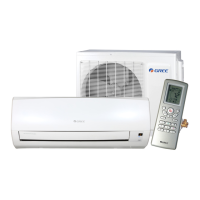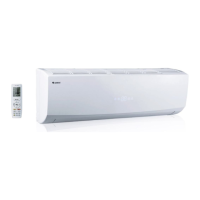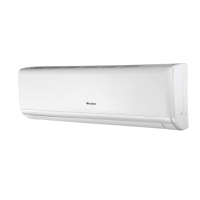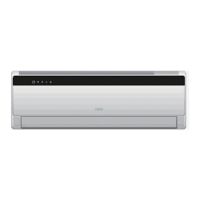Providing a Hermetically Sealed Refrigerant Circuit
Leak, Strength and Tightness Testing
General:
The sole purpose of this section is to raise awareness of the different methods
to ensure a sealed system, applicable for GREE Air–Conditioners and to assist
in determining the most appropriate one to use in different situations.
Analysing a system to be free of leaks is the most important activity during RAC
system installation, commissioning , maintenance or service. Having the proper
test equipment is at least half of the job. Unfortunately there are so many meth-
ods of leak detection and so many types of test equipment, no one method fits
every situation, especially if the refrigerant in use is flammable. Decisions need
to be made as to the method used and the type of equipment needed for every
leak to be found.
These conditions make leak testing one of the most challenging tasks faced by
service technicians. In addition, national regulations are requiring service techni-
cians to find leaks, thus not allowing technicians the choice of just adding refrig-
erant to keep the system in operation, which is indeed a dangerous practice for
systems using flammable refrigerants.
Finally, the most important concern, handing over a safe and efficient system to
the client, which has to be hermetically sealed and contains exactly the lowest
amount of refrigerant charge required and is set up and configured to factory
specifications and tolerances.
To provide a sealed refrigerant circuit the following direct refrigerant detection
methods are recommended:
1. Leak Testing with the use of an electronic gas detector
2. Strength Testing by pressurising the system with OFDN
3. Tightness Testing by pressurising the system with OFDN and subsequent
“Bubble Test”
Alternative:
Tightness Testing by pressurising the system with N2/H2 Forming Gas
mixture and the use of a Trace Gas Leak Detector
Possible Leak finding methods applicable for GREE Air– Conditioners ser-
vicing:
Best practice is
to combine
different leak
finding
methods to
provide a
hermetically
sealed
refrigerant
circuit!
Combine 2 & 3
and if
necessary + 5
Direct Leak Finding Methods To be used as;
Must have
and do
1
Soapy water bubble test with refrig-
erant pressure (only)
Leak Check
2
Using an HC electronic Leak-
Detector
Leak Test X
3
OFDN pressurised System and
soapy water (Bubble Test)
Tightness Test X
4
N
2
/H
2
Forming gas pressurised sys-
tem and Trace Gas Detector
Tightness Test
5 Pressurising the System with OFDN
Pressure Test > refrigerant
components are replaced
X
Will be
excellent
X
Not recom-
mended
X

